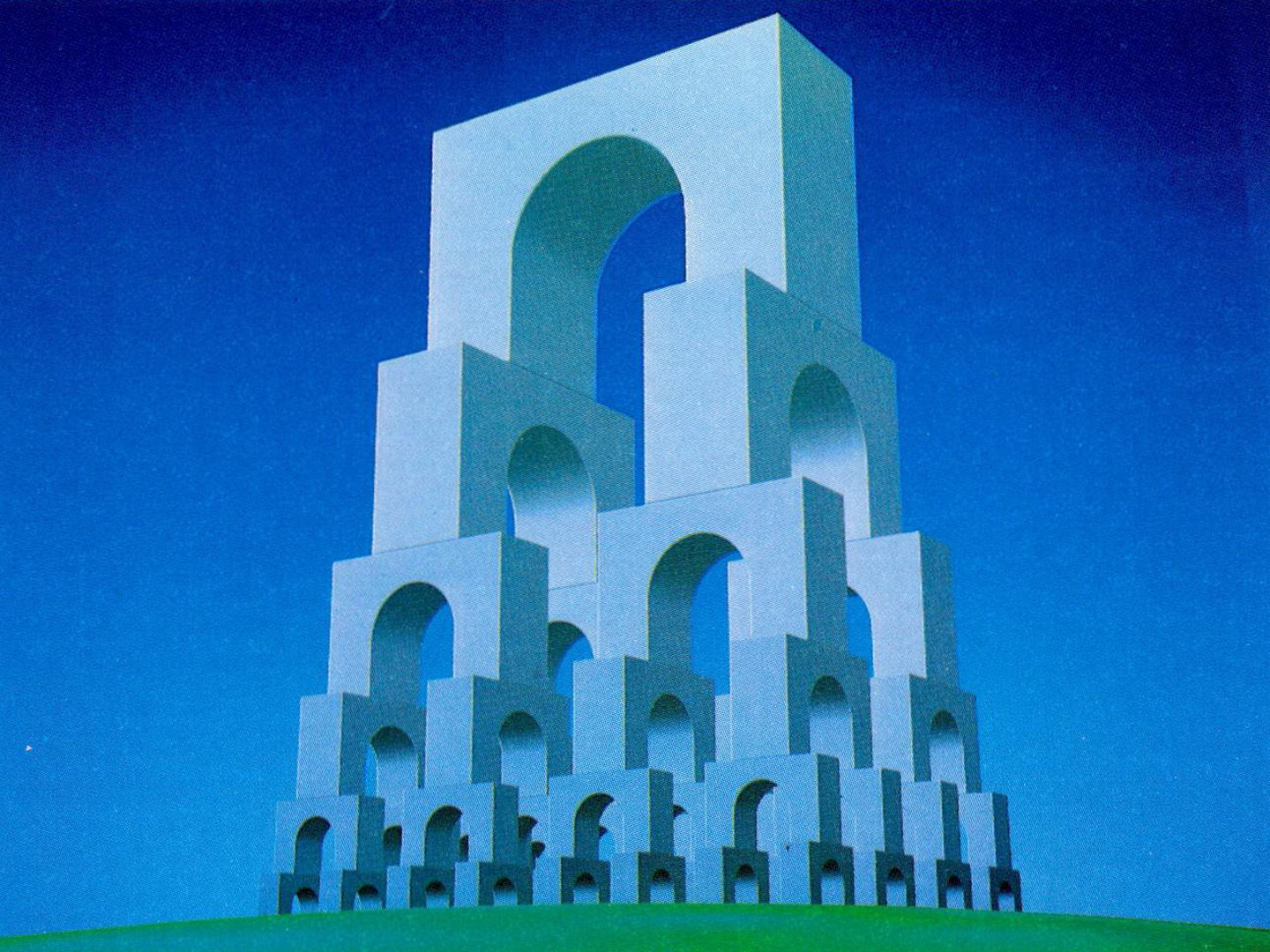“Computer animation with scripts and actors” by Reynolds
Conference:
Type(s):
Title:
- Computer animation with scripts and actors
Presenter(s)/Author(s):
Abstract:
A technique and philosophy for controlling computer animation is discussed. Using the Actor/Scriptor Animation System (ASAS) a sequence is described by the animator as a formal written SCRIPT, which is in fact a program in an animation/graphic language. Getting the desired animation is then equivalent to “debugging” the script. Typical images manipulated with ASAS are synthetic, 3D perspective, color, shaded images. However, the animation control techniques are independent of the underlying software and hardware of the display system, so apply to other types (still, B&W, 2D, line drawing …). Dynamic (and static) graphics are based on a set of geometric object data types and a set of geometric operators on these types. Both sets are extensible. The operators are applied to the objects under the control of modular animated program structures. These structures (called actors) allow parallelism, independence, and optionally, synchronization, so that they can render the full range of the time sequencing of events. Actors are the embodiment of imaginary players in a simulated movie. A type of animated number can be used to drive geometric expressions (nested geometrical operators) with dynamic parameters to produce animated objects. Ideas from programming styles used in current Artificial Intelligence research inspired the design of ASAS, which is in fact an extension to the Lisp programming environment. ASAS was developed in an academic research environment and made the transition to the “real world” of commercial motion graphics production.
References:
1. Abelson, H. and diDessa, A. Turtle Geometry, MIT Press (Series in Artificial Intelligence), Cambridge, MA, 1981.
2. Austin, H., “The LOGO Primer”, MIT A.I. Lab. Logo Working Paper 19.
3. Church, A “The Calculi of Lambda Conversions”, Annals of Mathematical Studies 6, Princeton University Press 1941, Reprinted by Klaus Reprint Co., 1965.
4. Clark, J., “Hierarchical Geometric Models for Visible Surface Algorithms”, CACM, October 1976.
5. Dahl, Myhrhaug, and Nygaard The SIMULA 67 Common Base Language, Norwegian Computing Centre, Oslo, 1968.
6. DeFanti, T. “The Digital Component of the Circle Graphics Habitat”, Proceedings NCC 1976.
7. Dijkstra, E.W. “Notes on Structured Programming”, August 1969
8. Eastman, C. and Henrion, M. “GLIDE: A Language for Design Information Systems”, SIGGRAPH ’77 Proceedings, July 1977, San Jose, CA.
9. Futrelle, R. P. and Barta, G. “Towards the Design of an Intrinsically Graphical Language”, SIGGRAPH ’78 Proceedings, August 1978, Atlanta, GA.
10. Goates, G., Griss, M. and Herron, G. “PICTUREBALM: A Lisp-based Graphics Language System with Flexible Syntax and Hierarchical Data Structure”, SIGGRAPH ’80 Proceedings, July 1980, Seattle, WA.
11. Goldberg, A. and Kay, A. SMALLTALK-72 Instruction Manual Learning Research Group, Xerox Palo Alto Research, March 1976.
12. Greif, I. and Hewitt, C. “Actor Semantics of PLANNER-73”, Proc. of ACM SIGPLAN-SIGACT Conf., Palo Alto, CA, January 1975.
13. Hewitt, C. and Smith, B. “Towards a Programming Apprentice”, MIT AI Lab Working Paper 90, January 1975.
14. Hewitt, C. and Atkinson, R., “Parallelism and Synchronization in Actor System”, ACM Symposium on Principles of Programming Languages 4, January 1977, L. A. CA.
15. Jones, B. “An extended ALGOL-60 for Shaded Computer Graphics”, ACM SIGPLAN/SIGGRAPH Symposium on Graphical Languages, April 1976.
16. Kahn, K. “An Actor-Based Computer Animation Language”, Proc. of the ACM-SIGGRAPH Workshop on User-Oriented Design of Computer Graphics Systems, Pittsburg, PA, October 1976.
17. Kahn, K., “A Computational Theory Of Animation”, MIT A.I. Lab. Working Paper 145, April 1977.
18. Larkin, F. “Computing with Text-Graphic Forms”, Conference Record of the 1980 LISP Conference, August 1980, Stanford University.
19. Larkin, F. “A Structure from Manipulation for Text-Graphic Objects”, SIGGRAPH ’80 Proceedings, July 1980, Seattle, WA.
20. Moon, D. MacLisp Reference Manual, Revision 0, MIT Project MAC, December 1975.
21. Newman, W. and Sproull, R. Principles of Interactive Computer Graphics, McGraw-Hill, 1973 and 1979.
22. Pfister, G. “A High Level Language Extension for Creating and Controlling Dynamic Pictures”, ACM SIGPLAN/SIGGRAPH Symposium on Graphical Languages, April 1976.
23. Preissler, M. “Multi-processed Music Synthesis”, BS Thesis MIT EECS Department, May 1976.
24. Reynolds, C. “A Multiprocessing Approach to Computer Animation”, SB thesis, MIT EECS Department, August 1975.
25. Reynolds, C. “Computer Animation in the World of Actors and Scripts”, SM thesis, MIT (Architecture Machine Group), May 1978
26. Reynolds, C. Actor / Scriptor Animation System User’s Manual 3.0, (ASASUM 3), Information International Inc., in preparation.
27. Smoliar, S. “A Parallel Processing Model of Musical Structures” MIT AI Lab Technical Report 242, September 1971.
28. Sussman, G. and Steele, G. “SCHEME – An Interpreter for Extended Lambda Calculus”, MIT AI Lab Memo 349, December 1975.
29. Teitelman, W. InterLISP Reference Manual, Xerox Palo Alto Research Center, 1978.
30. Winograd, T. Understanding Natural Language, Academic Press, 1974.
31. Winston, P. and Horn, B. Lisp, Addison Wesley, 1981.
32. Wirth, N. “MODULA: a Language for Modular Multiprogramming”, Software, Practice and Experience 7,1; 1977 pp. 3-35.





